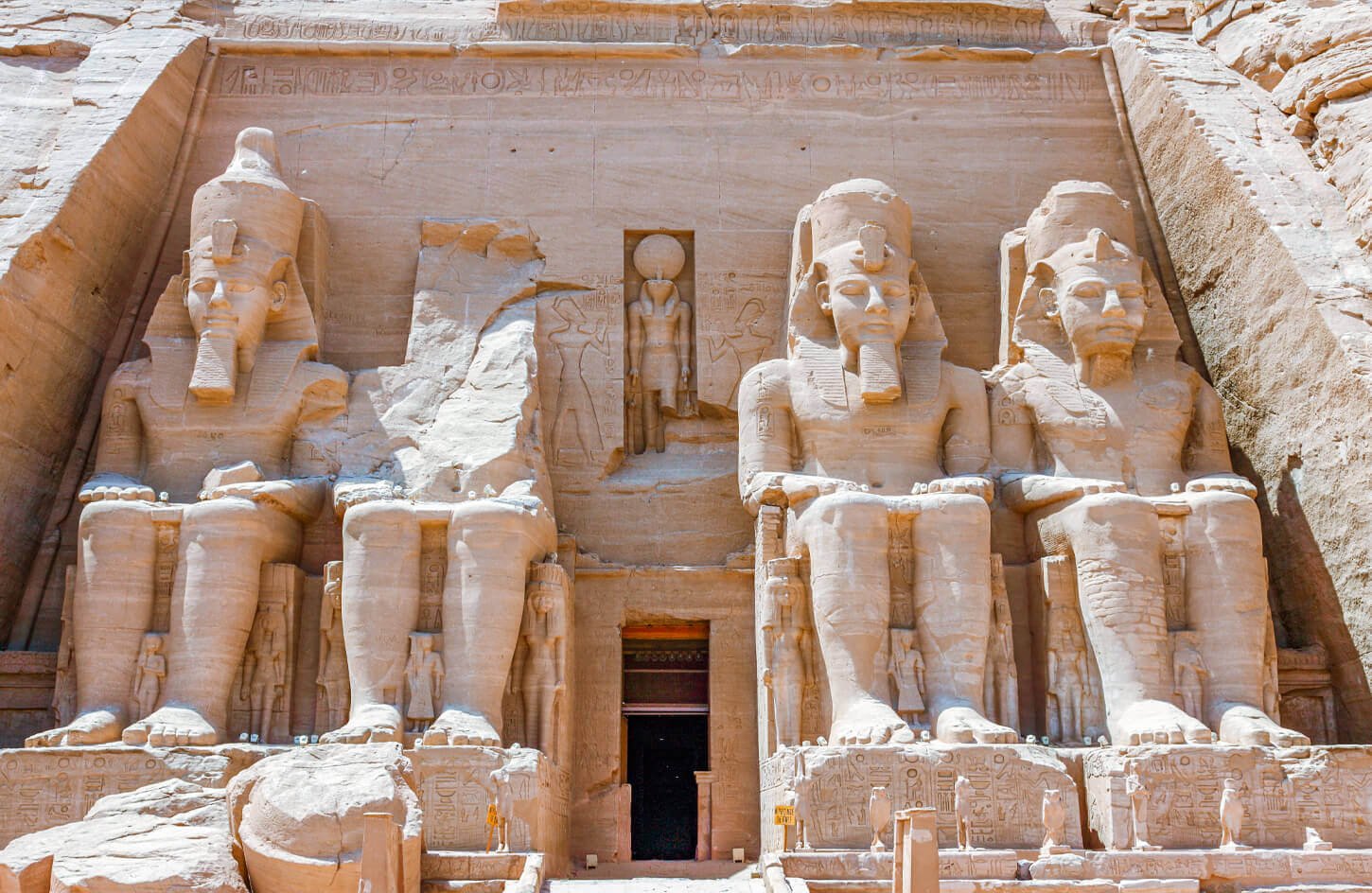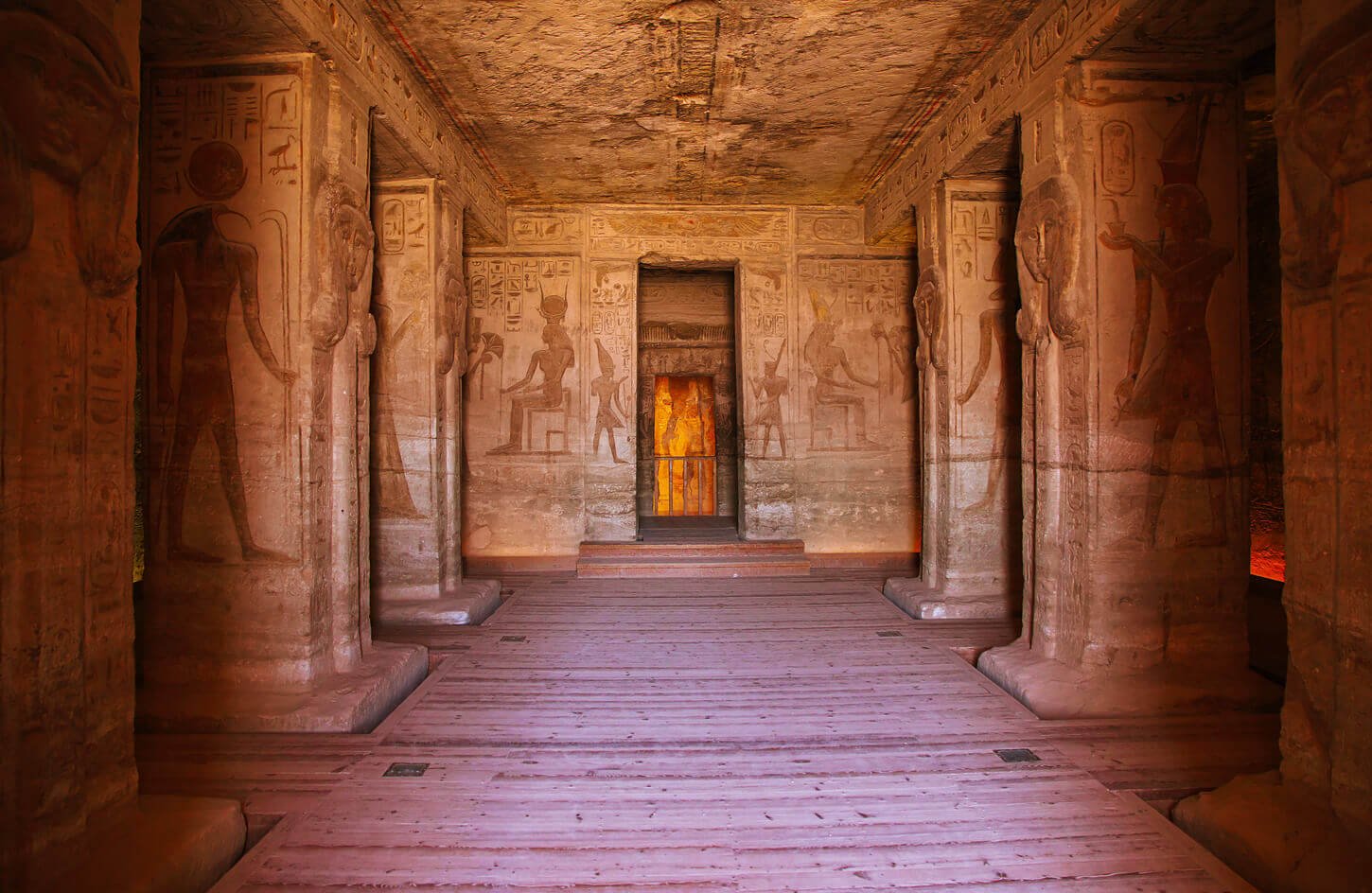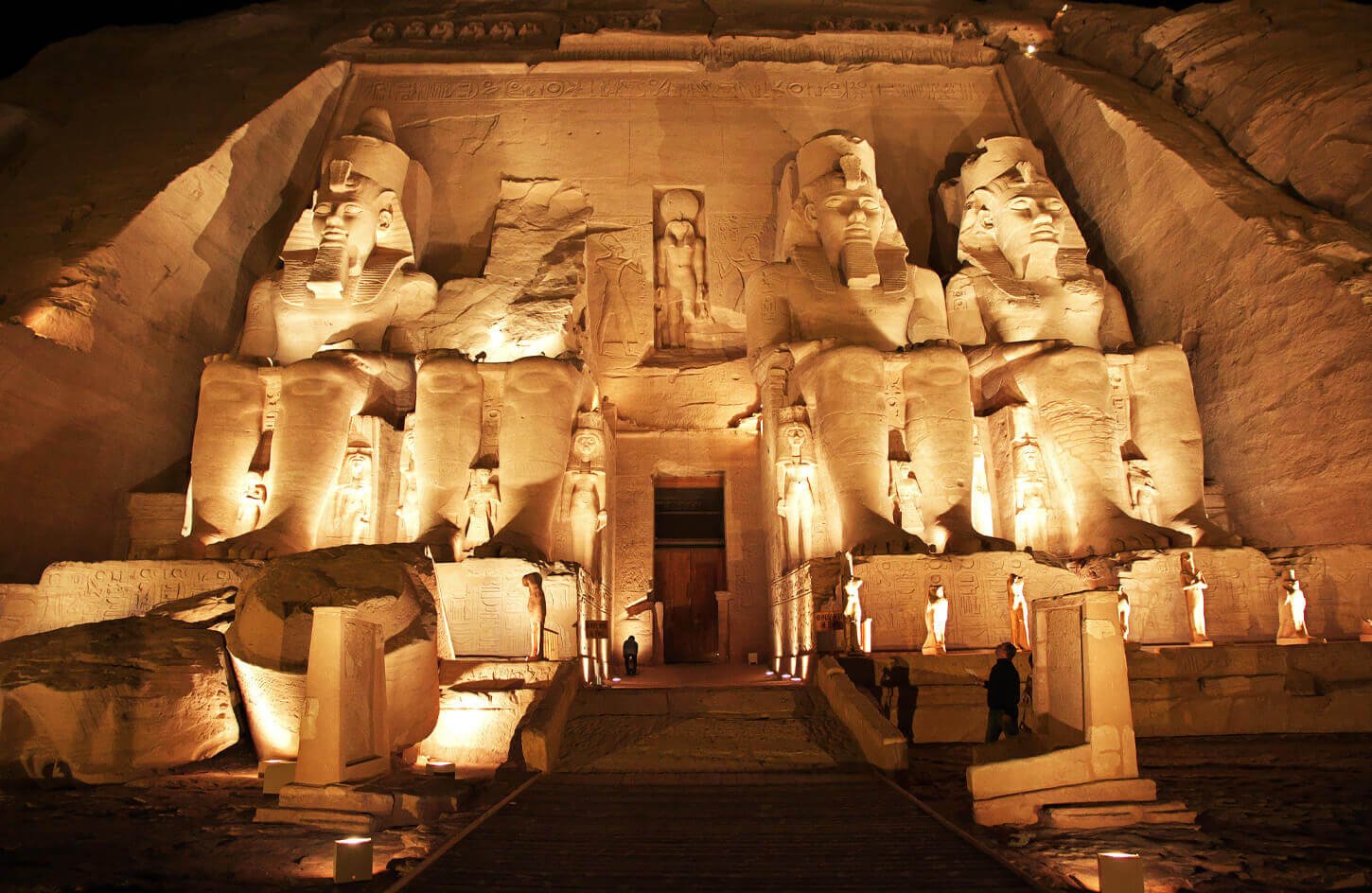The Abu Simbel temples are a timeless testament to the grandeur of Ancient Egyptian civilization. Built in the 13th century BCE, during the reign of the 19th Dynasty Pharaoh Ramesses II—often called Ramesses the Great—and his queen Nefertari, these colossal structures have captivated travelers for centuries. Constructed over 20 years, the temples are a striking example of ancient architectural ingenuity, with massive rock-cut statues standing as guardians of history.
Who Were the Temples Dedicated To?
The temples were designed to honor both the gods and the Pharaoh. The larger temple was dedicated to Amun, Ra-Horakhty, Ptah, and Ramesses himself, emphasizing the divine nature of the Pharaoh’s rule. The smaller temple was dedicated to Queen Nefertari and the goddess Hathor, symbolizing the queen’s elevated status and her role as a divine consort.
Rediscovery and Relocation
The Rediscovery of Abu Simbel
For centuries, the temples of Abu Simbel lay hidden beneath the sands of the Nubian desert, forgotten by the world. In the early 19th century CE, Swiss explorer Johann Ludwig Burckhardt rediscovered the site, reigniting global interest in Egypt’s ancient wonders.
Saving Abu Simbel: The Aswan High Dam Project
The construction of the Aswan High Dam in the 1960s posed a serious threat to Abu Simbel, as the rising waters of Lake Nasser threatened to submerge the temples. In response, an international campaign led by UNESCO rallied financial and technical support from numerous countries.
Between 1964 and 1968, the temples were meticulously dismantled and relocated to a higher location, 65 meters above their original site. This remarkable engineering achievement preserved the temples for future generations and symbolized global cooperation in heritage conservation.
Gratitude and Global Gifts
To express gratitude for international support, Egypt gifted four temples to contributing nations, including the Temple of Debod, now a popular tourist attraction in Madrid, Spain.

The Majestic Temples of Abu Simbel: A Visitor’s Experience
The Main Temple
The Great Temple of Ramesses II is the larger of the two and features four colossal seated statues of the Pharaoh, each standing 20 meters tall. These statues flank the entrance, exuding power and divinity. Inside, the temple’s walls are adorned with intricate carvings depicting Ramesses II’s military victories, including the famous Battle of Kadesh.
One of the most fascinating features of the Great Temple is its solar alignment. Twice a year—on February 22 and October 22—the rising sun illuminates the inner sanctuary, lighting up the statues of the gods and Ramesses II, a testament to the astronomical knowledge of Ancient Egyptian architects.
The Smaller Temple
Dedicated to Queen Nefertari and the goddess Hathor, the smaller temple is equally captivating. The façade features six statues—four of Ramesses II and two of Nefertari—each standing 10 meters tall. Inside, the walls depict scenes of Nefertari’s divine role, emphasizing her significance in Ramesses’s reign.
Light and Sound Show
If you stay overnight in Abu Simbel, you can witness the mesmerizing light and sound show held every evening. This spectacle brings the history of the temples to life, with vivid illuminations and storytelling. Showtimes are at 6 pm in winter and 7 pm in summer, and tickets cost LE 250.

Tips for Visiting Abu Simbel
The Best Time to Visit
The best time to visit Abu Simbel is during the cooler months from October to April. Early morning visits are highly recommended to avoid the midday heat and witness the magical sunrise over the desert.
What to Bring
- Comfortable walking shoes for exploring the temple complex.
- A hat, sunglasses, and sunscreen to protect against the sun.
- Plenty of water to stay hydrated.
- A camera or smartphone to capture the breathtaking views.
Travel Tip
Take an early morning bus or excursion to arrive in time for sunrise. Watching the first rays of sunlight illuminate the desert and temples is an experience you’ll never forget!
How to Get to Abu Simbel
From Aswan
Abu Simbel is located approximately 280 kilometers south of Aswan, and most visitors make a day trip from there. Here are the main travel options:
1. By Plane
Flying is the fastest way to reach Abu Simbel, with flights from Aswan taking just 45 minutes. However, flights are not daily, and high ticket prices, along with time spent at airports, make this option less convenient for many travelers.
2. By Boat
Cruising on Lake Nasser is a luxurious way to visit Abu Simbel. These cruises sail between Aswan and Abu Simbel, stopping at various ancient Nubian sites along the way. Boats dock close to the temple complex, making it a comfortable option for those seeking a scenic journey.
3. By Bus
Traveling by bus is the most affordable and popular way to reach Abu Simbel.
- Public Buses: A public bus costs around LE 50 but arrives late in the morning, meaning you’ll miss the sunrise.
- Chartered Tourist Buses: These cost around LE 160 per person when booked directly, though hotels may charge extra for reservations.
- Private Car: Hiring a private car with a driver is more expensive but offers greater comfort and flexibility.
Buses typically leave Abu Simbel by 4 pm, so plan your visit to make the most of your time.
Staying Overnight
For those who wish to extend their visit, Abu Simbel offers a few accommodation options. Staying overnight allows you to explore the temples at a leisurely pace and enjoy the evening light and sound show.

Why Abu Simbel Should Be on Your Egypt Itinerary
Abu Simbel is more than just a historical site—it’s a journey into the heart of Ancient Egypt’s grandeur and ingenuity. From its colossal statues to its intricate carvings, the temples offer a glimpse into the life and legacy of one of Egypt’s greatest pharaohs. Whether you’re a history enthusiast or a curious traveler, visiting Abu Simbel is an unforgettable experience.
Related Articles You Might Find Interesting:


0 Comment